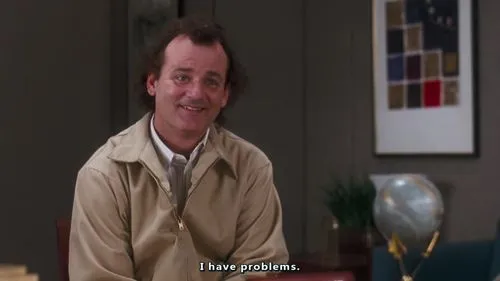If you haven’t seen What About Bob?, do yourself a favor and pause here—go watch it. It’s a quirky 1991 comedy starring Bill Murray as Bob Wiley, a neurotic man with just about every phobia in the book, and Richard Dreyfuss as Dr. Leo Marvin, the egotistical psychiatrist who takes Bob on as a patient. What unfolds is both hilarious and oddly profound.
While it’s a comedy on the surface, What About Bob? has stuck with me over the years, not just for its quotable lines (“Baby steps!”), but because Bob’s journey—albeit exaggerated—is deeply human.
Here are a few timeless lessons we can learn from Bob Wiley:
1. Everyone has needs—and that’s okay.
Bob is a mess. He knows it. And he asks for help. He needs help. And unlike many of us, he doesn’t hide it behind perfectionism, professionalism, or pride. His willingness to be open about his needs, even if uncomfortable or awkward, is something we could all practice more often—especially in a world that often rewards image over authenticity.
2. Start small. Really small.
Bob’s mantra—“baby steps”—might sound silly, but it’s solid advice. We often wait until we have a complete plan, a perfect strategy, or all the courage we’ll ever need. Bob just moves forward, awkwardly and imperfectly. And guess what? It works.
Whether you're learning a new skill, improving your mental health, or navigating change, momentum starts with one small step. Even if it's just getting out of bed.
3. What you say to yourself matters.
Bob is constantly repeating affirmations to himself: “I feel good, I feel great, I feel wonderful.” It’s kind of ridiculous, but it also works. The words we say to ourselves (out loud or in our heads) shape our reality.
Self-talk isn't just for the overly anxious. It's for all of us who are trying to quiet doubt, build resilience, or shift from fear to courage.
4. Connection is healing.
Despite Bob’s social awkwardness (or maybe because of it), he genuinely connects with people—from Dr. Marvin’s family to random strangers. He listens, laughs, and brings out joy in others.
In contrast, Dr. Marvin, the “expert,” is isolated and focused on control.
It’s a reminder that healing and growth rarely happen alone. They happen in relationships—in being seen, heard, and valued. Bob finds belonging not through perfection, but through presence.
5. Find joy in the simple stuff.
Bob delights in everything. A family dinner, a boat ride (“I’m sailing!”), a goldfish named Gil. He experiences the moment, even when the moment is small or silly.
In our quest for bigger goals and better outcomes, we often overlook the joy right in front of us. Bob doesn’t. And that’s worth emulating.
6. Optimism is powerful—and contagious.
Bob’s hopefulness is relentless. Sometimes irritatingly so. But optimism, even the offbeat kind, has power. Bob doesn’t just “think positive.” He believes that things can get better. That life is worth showing up for.
Even when the odds (or the therapist) are against him.
Final Thought: What if we all lived a little more like Bob?
What if we stopped trying to be flawless experts, and embraced being messy, honest learners?
What if we asked for help more freely? Took smaller steps? Chose joy on purpose?
Bob Wiley may be a fictional character, but his weirdly wonderful approach to life has more to teach us than most self-help books. I’m still trying to live like Bob—and I think the world would be a bit better if we all did.

No comments:
Post a Comment